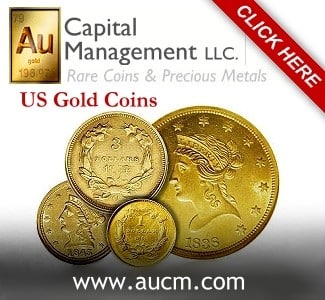Description:
In 2004, the Austrian Mint continued its theme of early 20th-century modernist design, with the second release in its 100-euro gold Jugendstil collection honoring the architecture and artwork of the Vienna Secession.
The Vienna Secession was an important modernist architectural movement that retaliated against the Beaux-Arts and Art Nouveau, two decidedly French schools. Deriving some of its inspiration from the work of Scottish architect Charles Rennie Mackintosh, Austrian architects like Otto Wagner (1841-1918) and Joseph Maria Olbrich (1867-1908) were fascinated by the interplay of form and functionality. Olbrich’s Secession Building (Wiener Secessionsgebäude), featured on the coin’s obverse, was the opening salvo of a 10-year purely Austrian movement that still resonates today.
This is the second appearance of the Secession Building on an Austrian coin during the Euro era. The structure first appeared in 2002 as the national side of the Austrian 50-euro cent. That coin features a head-on perspective; the 100-euro gold design is much more expressive.
Of the building itself, much can be said.
Derided at the time of its inception, the facility was revolutionary in its use of unbroken planes and the way Olbrich bathed his structure with translucent natural light. For Vienna, the Secession Building would prove the template for a number of influential structures, including Otto Wagner’s magnificent Austrian Postal Savings Bank (Österreichische Postsparkasse).
The Klimt connection to the Secession architects is very strong. A founding member of the movement, Gustav Klimt contributed artwork and intellectual concepts to the group during a period lasting from 1897 to 1908. Klimt’s audacious work was similarly greeted with a critical eye; many deemed his paintings pornographic and revolutionary. Today, his work is seen as more erotic than pornographic, more elite than revolutionary.
To everything a season.
Legal tender in Austria, the 2004 Vienna Secession 100-euro coin weighs 16.227 grams and is made of an outer ring of 0.986 fine gold.
The proof-only coin features a characteristically rich deep cameo contrast and reflective glasslike mirrors. A total of 30,000 pieces were struck. In its original packaging, each coin comes in a plastic capsule that fits snugly inside of a burgundy box. A serially-numbered Certificate of Authenticity is also included.
Obverse:
A two-thirds view of the Secession Building as seen from the street. Wrapping around the top rim, the inscription REPUBLIK ÖSTERREICH, each letter separated by a dot. In the exergue, the date 2004 and denomination 100 EURO, each letter also separated by dots.
On the structure itself, two inscriptions are legible: to the left of the Gorgon-guarded entrance way, on the left pylon are the words VER SACRUM (“Sacred Spring”), and above the door DER ZEIT IHRE KUNST DER KUNST IHRE FREIHEIT (“To every age its art. To art its freedom.”)
Reverse:
An adaptation of Gustav Klimt’s masterpiece Beethoven Fries (1902), commissioned for display at the 14th Vienna Secessionist Exhibition. In the midst of Klimt’s intricate galaxy of minute geometric forms are three figures: a wreath-laden woman (“Ambition”); a female figure, hands clasped and head bowed (“Sympathy”); and a stern-faced knight dressed in armor (“Strength”).
To the left, the inscription BEETHOVENFRIES.
Designer(s): Helmut Andexlinger is at the forefront of a younger generation of coin designers. His innovative work with computer technology has resulted in many award-winning coins for the Mint (View Designer’s Profile).
Coin Specifications:
| Country: | Austria |
| Year Of Issue: | 2004 |
| Denomination: | 100 Euro |
| Mint Mark: | |
| Mintage: | 30,000 |
| Alloy: | .986 Fine Gold |
| Weight: | 16.227 g |
| Diameter: | 30 mm |
| OBV Designer | Helmut Andexlinger |
| REV Designer | Helmut Andexlinger |
| Quality: | Proof |
Keep up with all the latest coin releases from the world’s mints by clicking on CoinWeek’s World Coin Profiles Page.
